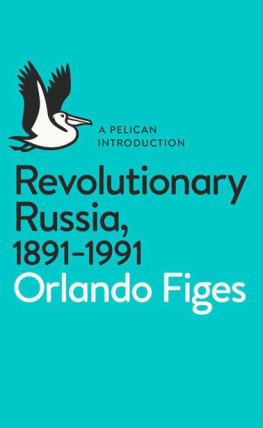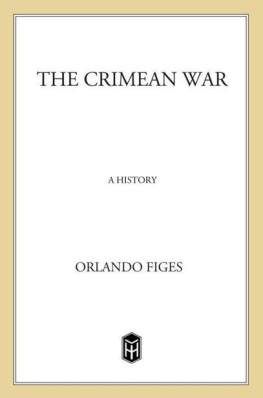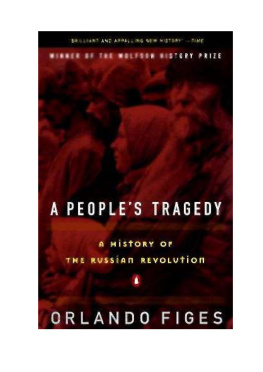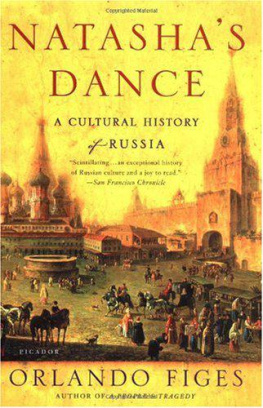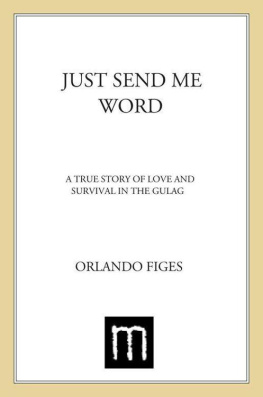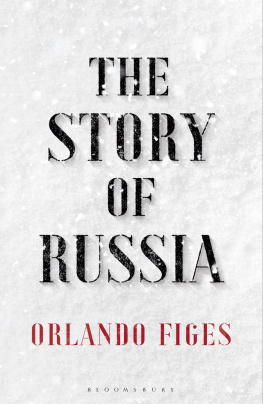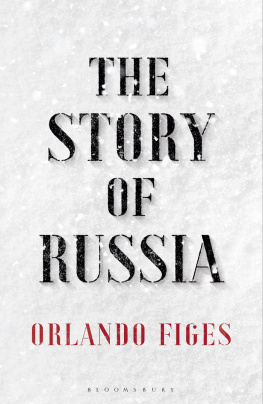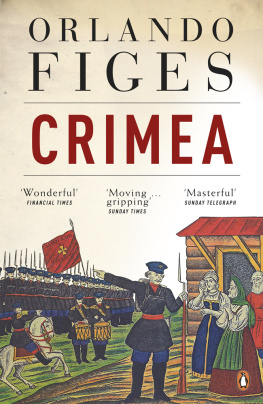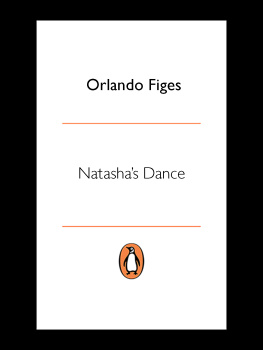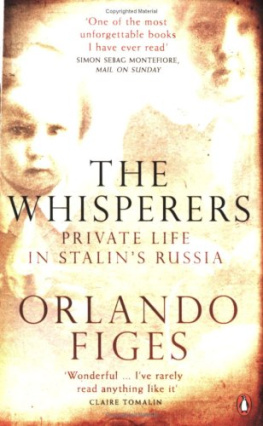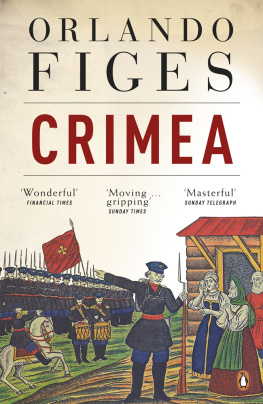Orlando Figes - Revolutionary Russia, 1891-1991: A Pelican Introduction
Here you can read online Orlando Figes - Revolutionary Russia, 1891-1991: A Pelican Introduction full text of the book (entire story) in english for free. Download pdf and epub, get meaning, cover and reviews about this ebook. year: 2014, publisher: Penguin Books Ltd, genre: History. Description of the work, (preface) as well as reviews are available. Best literature library LitArk.com created for fans of good reading and offers a wide selection of genres:
Romance novel
Science fiction
Adventure
Detective
Science
History
Home and family
Prose
Art
Politics
Computer
Non-fiction
Religion
Business
Children
Humor
Choose a favorite category and find really read worthwhile books. Enjoy immersion in the world of imagination, feel the emotions of the characters or learn something new for yourself, make an fascinating discovery.
- Book:Revolutionary Russia, 1891-1991: A Pelican Introduction
- Author:
- Publisher:Penguin Books Ltd
- Genre:
- Year:2014
- Rating:3 / 5
- Favourites:Add to favourites
- Your mark:
- 60
- 1
- 2
- 3
- 4
- 5
Revolutionary Russia, 1891-1991: A Pelican Introduction: summary, description and annotation
We offer to read an annotation, description, summary or preface (depends on what the author of the book "Revolutionary Russia, 1891-1991: A Pelican Introduction" wrote himself). If you haven't found the necessary information about the book — write in the comments, we will try to find it.
Revolutionary Russia, 1891-1991: A Pelican Introduction — read online for free the complete book (whole text) full work
Below is the text of the book, divided by pages. System saving the place of the last page read, allows you to conveniently read the book "Revolutionary Russia, 1891-1991: A Pelican Introduction" online for free, without having to search again every time where you left off. Put a bookmark, and you can go to the page where you finished reading at any time.
Font size:
Interval:
Bookmark:



CHAPTER 1
The Start
CHAPTER 2
The Dress Rehearsal
CHAPTER 3
Last Hopes
CHAPTER 4
War and Revolution
CHAPTER 5
The February Revolution
CHAPTER 6
Lenins Revolution
CHAPTER 7
Civil War and the Making of the Soviet System
CHAPTER 8
Lenin, Trotsky and Stalin
CHAPTER 9
The Revolutions Golden Age?
CHAPTER 10
The Great Break
CHAPTER 11
Stalins Crisis
CHAPTER 12
Communism in Retreat?
CHAPTER 13
The Great Terror
CHAPTER 14
Revolution for Export
CHAPTER 15
War and Revolution
CHAPTER 16
Revolution and Cold War
CHAPTER 17
The Beginning of the End
CHAPTER 18
Mature Socialism
CHAPTER 19
The Last Bolshevik
CHAPTER 20
Judgement
My aim is to provide a brief account of the Russian Revolution in the longue dure, to chart one hundred years of history as a single revolutionary cycle. In this telling the revolution starts in the nineteenth century (and more specifically in 1891, when the publics reaction to the famine crisis set it for the first time on a collision course with the autocracy) and ends with the collapse of the Soviet regime in 1991.
It might seem odd to plot the revolution in one hundred years of history. Most short books on the subject focus on the years immediately before and after 1917. But to understand the revolutions origins, its violent character and tragic course from freedom to dictatorship, one must look more closely at the tsarist past; and to perceive its lasting outcomes, one must see it in the broader context of Soviet history. Many of the themes of the first chapters, on the tsarist period the absence of a political counter-balance to the power of the state; the isolation of the educated classes from the common people; the rural backwardness and poverty that drove so many peasants to seek a better life in the industrial towns; the coercive basis of authority in Russia; and the extremism of the socialist intelligentsia will reappear in the later chapters, on 1917 and the Soviet regime.
When did the Russian Revolution end? Historians have chosen various dates, depending on the stories which they wish to tell, and these of course can all be justified. Some have ended their accounts in 1921 with the ending of the Civil War, when armed opposition to the Bolsheviks was finally defeated, and the consolidation of the Soviet dictatorship. Others have concluded with the death of Lenin in 1924, as I did in A Peoples Tragedy, a work on which I draw in these pages, on the grounds that by this time the basic institutions, if not the practices, of the Stalinist regime were in place. One or two have ended in 1927, with the defeat of Trotsky and the Left Opposition; or in 1929, with the onset of a new revolutionary upheaval, the forced industrialization and collectivization of the first Five Year Plan, implying that the Stalinist economy was the significant outcome of 1917.
One of the most influential historians of the Soviet period, Sheila Fitzpatrick, concluded her short history of the revolution in the mid-1930s, a period of retreat from its utopian objectives when the structural economic changes of Stalins revolution were consolidated as a permanent system. By her own later admission, this was to suggest that the Great Terror of 19378 was a monstrous postscript to the revolution, an aberration explained by the regimes fear of war, when in fact it was a part of it the biggest in a series of waves of terror whose origins can only be explained by the insecurities of the Soviet regime going back to 1917. To omit the Great Terror from a history of the Russian Revolution, Fitzpatrick acknowledged, would be the equivalent of writing an account of the French Revolution of 1789 without the Reign of Terror (17934) for which it was chiefly known.
The Great Terror was not the final wave of violence by the Soviet state. The population of the Gulag labour camps, which Solzhenitsyn placed at the very core of the Bolshevik experiment, reached its peak, not in 1938, but in 1952. So it does not make much sense to end a history of the revolution with the halting of the Great Terror. But then it doesnt make much sense either to break it off in 1939 or 1941. The Second World War did not interrupt the revolution. It intensified and broadened it. Bolshevism came into its own during the war with its military discipline and cult of sacrifice, its willingness to expend human life to meet its goals, and its capacity to militarize the masses through its planned economy, it was made to fight. The revolution was reforged and toughened by the war. Through the Red Army and its NKVD units, the Soviet empire tightened its control of its borderlands in West Ukraine and the Baltic, purging towns and villages and sending to the Gulag, in their hundreds of thousands, nationalist insurgents, repatriated Soviet servicemen and collaborators with the Germans. By force of arms, the Bolsheviks exported the Russian Revolution into Eastern Europe first in 193940 and again in 1945.
The Cold War, in this sense, has to be seen as a continuation of the international civil war started by the Bolsheviks in 1917. The global ambitions of the revolutions leaders remained essentially unchanged, from their first attempts to extend Soviet power into Europe through the invasion of Poland in 1920 to their final foreign adventure in Afghanistan after 1979. Lenins power seizure had been based on the idea that the revolution could not survive on its own in a backward peasant country such as Russia, that it needed the support of revolutions in the more advanced industrial states or in countries that could give it the resources it needed to industrialize: a life-or-death conflict between socialism and the capitalist powers was unavoidable as long as capitalism existed. Stalin, Khrushchev, Brezhnev and Andropov, if not Gorbachev, were all Leninists in this belief.
Until the end of their regime, the Soviet leaders all believed they were continuing the revolution Lenin had begun. Their means of rule altered over time, of course, particularly after Stalins death, when they gave up on the use of mass terror, but they always saw themselves as Lenins heirs, working to achieve the same utopian goals envisaged by the founders of the Soviet state: a Communist society of material abundance for the proletariat and a new collective type of human being. That is why I think a good case can be made for the revolution being treated as a single cycle of one hundred years, ending with the collapse of the Soviet system in 1991.
Within this longer cycle I aim to explain the revolutions rise and fall in three generational phases. The first corresponds to the lifetime of the Old Bolsheviks, mostly born in the 1870s or 1880s and, if not already dead, eliminated in the Great Terror. Their utopian ideals and austere Party culture of military unity and discipline had been shaped by years of struggle in the conspiratorial underground. But they obtained their revolutionary power from the cataclysm of the First World War which seemed at once to undermine the value of a human life and to open up the possibility of altering the nature of humanity out of the destruction it had caused and reached the height of their destructive fury in the Civil War, from which the Bolsheviks emerged victorious and strengthened in their conviction that any fortress could be stormed. From these killing fields they set about the building of a new society. But they could not overcome the problem of the peasantry the smallholding family farmers who made up three quarters of the countrys population and dominated its economy with their individualistic attitudes, patriarchal customs and attachment to the old Russian world of the village and the church. To so many of the Partys new supporters peasant sons and daughters who had fled the backward village for a better life the revolution could not banish peasant Russia fast enough.
Font size:
Interval:
Bookmark:
Similar books «Revolutionary Russia, 1891-1991: A Pelican Introduction»
Look at similar books to Revolutionary Russia, 1891-1991: A Pelican Introduction. We have selected literature similar in name and meaning in the hope of providing readers with more options to find new, interesting, not yet read works.
Discussion, reviews of the book Revolutionary Russia, 1891-1991: A Pelican Introduction and just readers' own opinions. Leave your comments, write what you think about the work, its meaning or the main characters. Specify what exactly you liked and what you didn't like, and why you think so.

